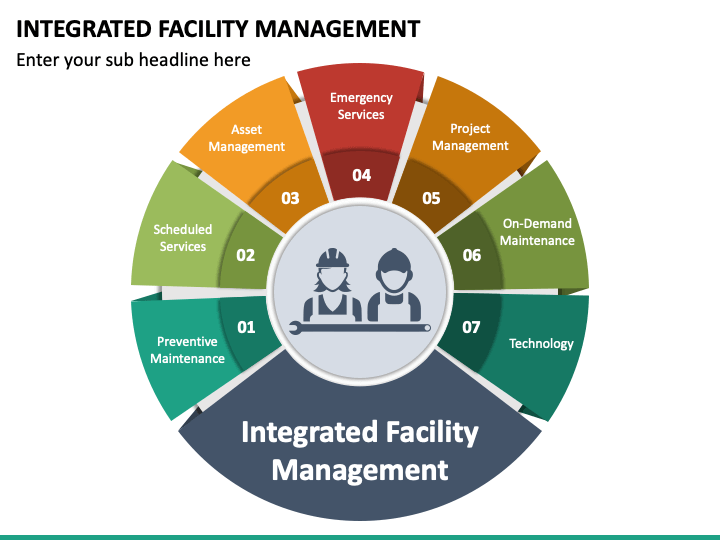Leading Advantages of Total Facility Management for Streamlined Workflow
Total Facility Management (TFM) stands for a calculated technique to enhancing operational performance by integrating numerous solutions, such as maintenance and safety, under a unified management structure. The question remains: what specific benefits can organizations harness from embracing TFM, and how might these benefits transform their operational landscape?
Boosted Functional Efficiency
Improved functional effectiveness is a primary advantage of applying total facility management (TFM) methods. TFM includes a thorough method to managing a center's resources, processes, and facilities, ultimately simplifying operations. By combining various services-- such as upkeep, room, security, and cleaning management-- TFM reduces redundancies and improves sychronisation among different operational functions.
The assimilation of technology more magnifies this performance. Advanced facility management systems supply real-time data analytics, making it possible for facility supervisors to make enlightened choices that improve process and resource allowance. Anticipating upkeep techniques, for example, anticipate tools failures before they take place, minimizing downtime and prolonging possession life expectancy.
Furthermore, TFM advertises standardized processes throughout various divisions, making sure uniformity and quality in service shipment. This uniformity decreases operational disruptions and cultivates an extra collective working environment. As an outcome, staff members can concentrate on their core duties, driving performance and boosting general performance.
Price Reduction and Cost Savings
Executing total facility management (TFM) not just boosts operational efficiency but also dramatically adds to set you back decrease and financial savings. By consolidating numerous solutions under a single management structure, organizations can remove redundancies and enhance processes, therefore reducing functional costs. TFM makes it possible for far better procurement strategies, permitting business to negotiate bulk getting contracts with providers and solution companies, bring about reduced prices.
Moreover, TFM highlights preventative upkeep, which minimizes unexpected malfunctions and prolongs the life-span of vital devices. This aggressive approach not only reduces repair work expenses however additionally enhances the dependability of facilitiess, making certain undisturbed procedures. Furthermore, energy performance efforts, usually a crucial emphasis of TFM, bring about considerable cost savings on energy bills, as facilitiess are maximized for decreased energy consumption.
Improved Source Management
Effective resource management is a foundation of total facility management (TFM), making it possible for companies to maximize the usage of their properties and labor force. By executing TFM techniques, companies can comprehensively assess their source allotment, guaranteeing that every possession is used successfully and effectively. This alternative strategy allows for the recognition of underperforming resources and the capacity for reallocation or improvement.
In enhancement, TFM facilitates the integration of modern technology for real-time monitoring of sources, which aids in predicting upkeep demands and protecting against expensive downtime. By leveraging data analytics, organizations can make educated choices about source deployment, inevitably improving productivity and minimizing waste.
In addition, TFM promotes a culture of continuous renovation, motivating groups to regularly examine and improve their resource management methods. Total Facility Management. This aggressive position not only reduces operational interruptions but also promotes innovation, as staff members are encouraged to suggest improvements based on their firsthand experiences with source application
Streamlined Communication Channels
In total facility management, structured interaction channels play an important role in promoting collaboration and effectiveness throughout teams. Effective interaction makes sure that all stakeholders, including facility supervisors, maintenance personnel, and provider, are straightened with organizational objectives and operational demands. By establishing clear lines of communication, teams can promptly deal with worries, share updates, and execute services, therefore minimizing downtime click here for info and boosting efficiency.
With centralized interaction platforms, details is conveniently obtainable, allowing for real-time updates on upkeep demands, resource allowance, and task timelines. This openness not only minimizes misunderstandings but also empowers workers to make enlightened choices promptly. Streamlined interaction promotes much better coordination throughout emergencies, ensuring that all workers are educated and can respond immediately.

Raised Concentrate On Core Activities
An essential benefit of total facility management is the boosted emphasis on core tasks, enabling companies to concentrate on their key organization goals - Total Facility Management. By outsourcing non-core functions such as safety, maintenance, and cleaning, companies can reroute their resources and power in the direction of calculated initiatives that straight add to their competitive advantage and growth
Total facility management integrates numerous operational jobs under a solitary umbrella, cultivating efficiency and minimizing redundancy. This loan consolidation not only enhances procedures however additionally enhances accountability, making sure that every facet of the facility operates harmoniously without drawing away attention from what truly matters-- core organization features.
Additionally, this approach allows staff members to devote their effort and time to jobs that drive development and improve consumer satisfaction, instead than obtaining slowed down by operational obstacles. With a reliable facility management partner taking care of daily operations, companies can accomplish higher dexterity, react swiftly to market changes, and keep a sharper emphasis on their objective.
Inevitably, boosted emphasis on core tasks causes enhanced total efficiency, permitting companies to strengthen their market setting and satisfy their tactical goals better. - Total Facility Management
Final Thought
In verdict, Total Facility Management dramatically boosts operational effectiveness by combining necessary services and leveraging data analytics for educated decision-making. Cost reductions and boosted resource management contribute to overall cost savings, while structured communication channels foster cooperation among stakeholders.
Total Facility Management (TFM) stands for a strategic approach you could try these out to boosting functional effectiveness by incorporating different solutions, such as upkeep and protection, under a unified management framework.Boosted functional performance is a primary advantage of applying total facility management (TFM) methods. Advanced facility management systems give real-time data analytics, enabling facility managers to make informed choices that improve workflow and resource allocation.Implementing total facility management (TFM) not only enhances functional performance but also substantially adds to set you back pop over to this site reduction and savings.Reliable source management is a keystone of total facility management (TFM), enabling organizations to enhance the use of their possessions and labor force.
Comments on “The Role of Total Facility Management in Ensuring Building Safety and Regulatory Compliance”